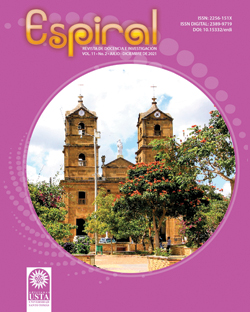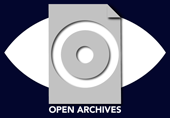Estudio sobre la trascendencia de las prácticas de laboratorio y la instrucción por pares en la enseñanza de la Física
Resumen
Se presenta una metodología de enseñanza aprendizaje a través de la implementación de dos técnicas de trabajo en equipo de forma simultánea: la instrucción entre pares (IP) y la realización en casa de prácticas de laboratorio de Física. La investigación fue de carácter cuantitativo por lo que se siguió las etapas correspondientes a este tipo de estudio. El desarrollo de la técnica se analizó en dos grupos de estudiantes independientes, uno correspondiente al grupo control (GC, 33 estudiantes), y el otro al grupo experimental (GE, 31 estudiantes). El método mostró un avance significativo en el aprendizaje de la asignatura de Física en el GE comparado con el GC. El progreso alcanzó una mejora de aproximadamente el 15% en el GE cuando se realizó la técnica de IP, y un aumento hasta del 23.2% cuando se implementó las prácticas del laboratorio en el hogar. Particularmente, las experiencias del laboratorio se realizaron con materiales de uso cotidiano.
Descargas
Referencias
Castillo, A. (2019). La metodología indagatoria como estrategia didáctica orientada a favorecer el aprendizaje de la física en estudiantes de 11° grado. (Tesis de Maestría en Enseñanza de la Ciencias Naturales y Exactas). Universidad Autónoma de Bucaramanga, Bucaramanga, Colombia.
Charro, E., Gómez, A., y Plaza, S. (septiembre de 2013). La Enseñanza de las Ciencias en la Educación Secundaria: Un estudio mediante la técnica Delphi. IX Congreso Internacional sobre Investigación en Didáctica de las Ciencias. Girona, España.
Escudero, R. (2014). Impacto del método “Instrucción por pares” con el apoyo de “clickers” en el aprendizaje de Matemáticas Básicas. Revista Internacional de Tecnología, Conocimiento y Sociedad 3(1), 57-67.
Flórez, M. (2011). Estrategia experimental para la enseñanza del movimiento de proyectiles y el movimiento circular uniforme utilizando el contexto. (Tesis de Maestría en Enseñanza de la Ciencias Naturales y Exactas). Universidad Nacional de Colombia, Manizales, Colombia.
Hernández-Sampieri, R., Fernández Collado, C., & Baptista Lucio, P. (2014). Metodología de la investigación, (6a. ed.). México D.F.: McGraw-Hill.
Hodson, D. (1994). Hacia un enfoque más crítico del trabajo de laboratorio. Enseñanza de las Ciencias: revista de investigación y experiencias didácticas.12 (3), 299-313.
Ladino, L., y Fonseca, Y. (2010). Propuesta curricular para la enseñanza de las ciencias naturales en el nivel básico con un enfoque físico. Revista Orinoquía, 14(2), 203-210.
Martínez, A. M., Cobos, J. C., y Torres, E. (2015). Matematización y modelización: experiencias y saberes. Una propuesta de aula. Espiral. Revista de Docencia e Investigación, 5(2), 9-22.
Mazur, E. (1997). Comprensión o memorización: ¿Estamos enseñando lo correcto? Conference on the Introductory Physics Course Wiley, New York. Pág. 1-17. Recuperado de: http://mazur.harvard.edu/sentFiles/MazurTalk_1782.pdf
Mazur, E. (2010). Peer Instruction: A User’s Manual. New Jersey, Pentice Hall.
Ministerio de Educación Nacional. (1994). Ley 115 de Educación, Colombia.
Ministerio de Educación Nacional. (2004). Estándares Básicos de Competencias en Ciencias Naturales y Ciencias Sociales.
Muñoz, D. (2015). Elaboración de una propuesta de enseñanza y aprendizaje de los conceptos básicos de la cinemática a través de actividades experimentales usando dispositivos móviles: ensayo en el grado 10° de la institución educativa Alvernia de la ciudad de Medellín. (Tesis de Maestría en Enseñanza de la Ciencias Naturales y Exactas). Universidad Nacional de Colombia, Medellín, Antioquía, Colombia.
Pinargote, K. (2014). Instrucción entre pares, un método sencillo pero efectivo para enseñar. Revista FENopina, 4(7), 56-59.
Quinceno, B., Barreneche, J., Pinto. M. (2018). Metodología de trabajo colaborativo/cooperativo para la investigación, la formación y el aprendizaje en comunicación. Espiral, Revista de Docencia e Investigación, 7(2), 11 - 25.
Revelo, L. (2014). La metodología del aprendizaje entre pares aplicada en la enseñanza de la física en educación básica (Tesis de Maestría en Enseñanza de las Ciencias Exactas y Naturales). Universidad Nacional, Palmira, Colombia.
Rodríguez, D. y Llovera, J. (2014). Estrategias de enseñanza en el laboratorio docente de Física para estudiantes de ingeniería. Latin-American Journal of Physics Education, 8(4), 4504-1.
Salinas, A. (2013). La Experimentación como Didáctica en la Enseñanza de la Física. (Tesis de Maestría en Enseñanza de las Ciencias Exactas y Naturales). Universidad Nacional. Palmira, Colombia.
Salinas, J., y Colombo, L. (1992). Los laboratorios de física de ciclos básicos universitarios instrumentados como procesos colectivos de investigación dirigida. Revista de Enseñanza de la Física. Asociación de profesores de física de la Argentina. 5(2), 10-17.
Zules, R. (2013). Aprender haciendo aplicado a las ciencias naturales de grado sexto y séptimo de la institución educativa Santa Marta del municipio de Suárez, Cauca. (Tesis de Maestría en Enseñanza de la Ciencias Naturales y Exactas). Universidad Nacional de Colombia, Palmira, Valle del Cauca, Colombia.

Esta obra está bajo licencia internacional Creative Commons Reconocimiento-NoComercial-SinObrasDerivadas 4.0.
El aviso de Copyright abajo expuesto aparecerá en la sección "Sobre Nosotros" de la revista y en cada metadato de los ítems publicados. Si bien corresponde a la revista determinar la naturaleza de su acuerdo de derecho de autor con los autores, el Proyecto de Conocimiento Público (PKP) recomienda el uso de la licenciaCreative Commons. A tal fín,se proporciona el ejemplo de aviso de Copyright que puede ser copiado y pegado en el espacio inferior para revistas que (a) ofrezcan acceso abierto, (b) ofrezcan acceso abierto retardado, o (c) no ofrezcan acceso abierto.








